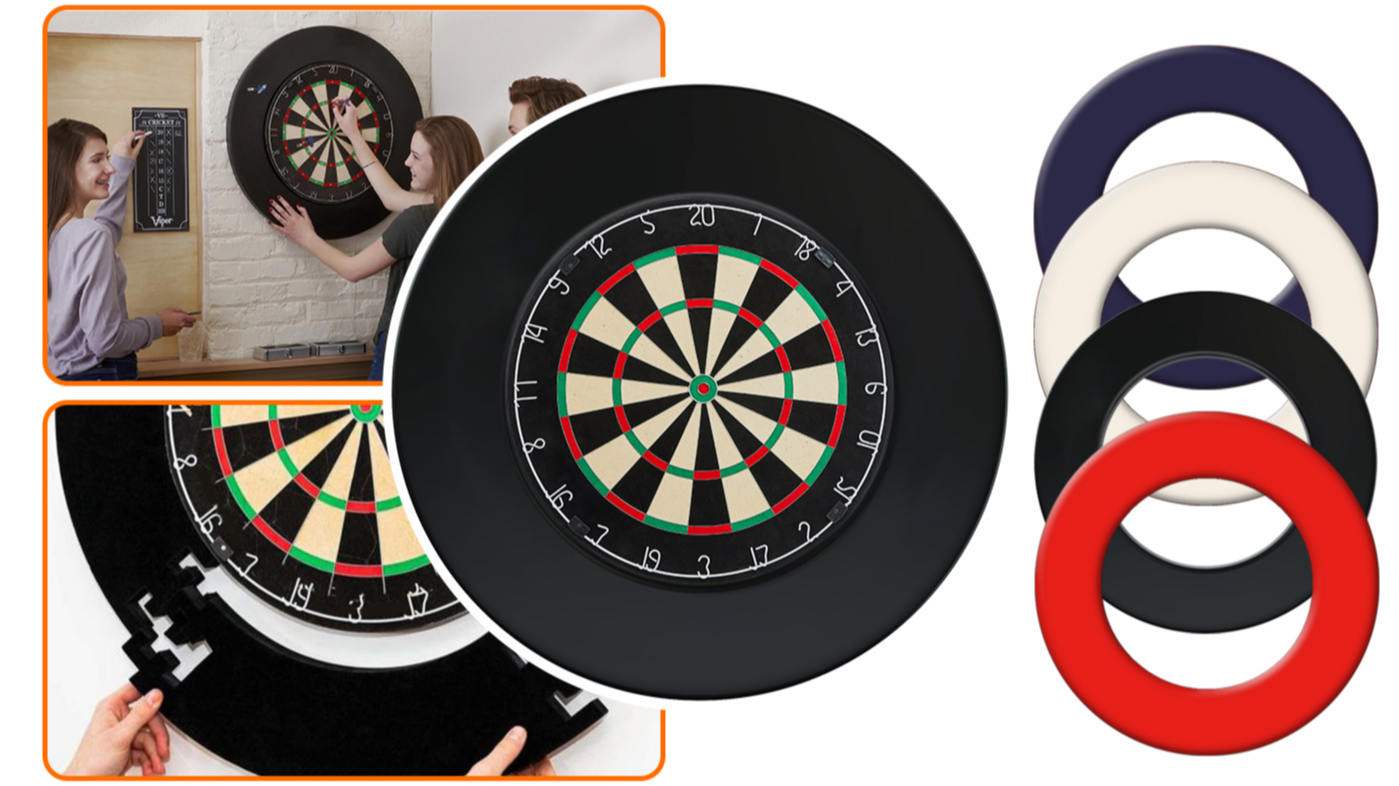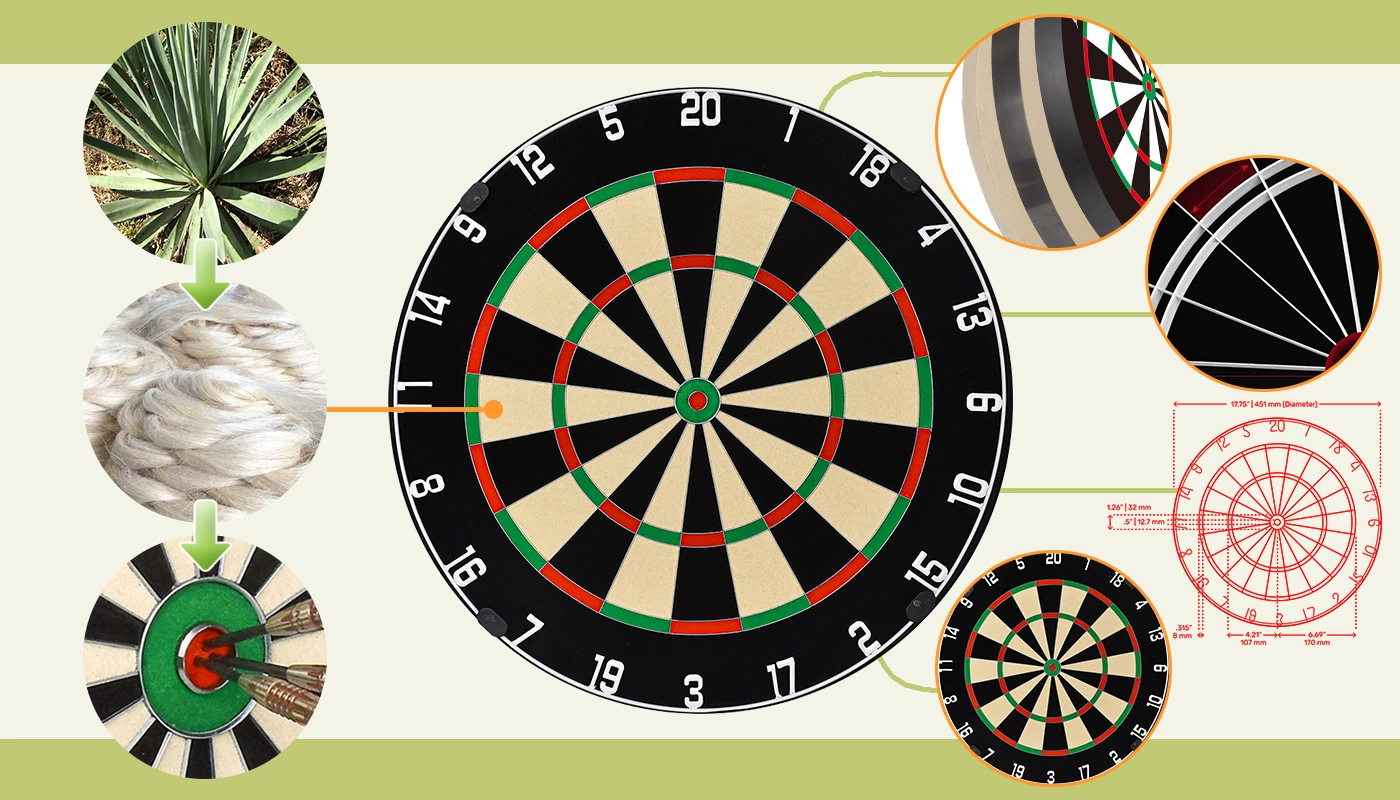Introduction
Dartboards are a great source of fun and competition, but they can also create a significant amount of noise when darts hit them, especially in shared living spaces or quiet environments like apartments or offices. The sound of darts striking the board can be distracting to others, affecting peace and productivity. Soundproofing your
dartboard is an effective way to reduce these disturbances while maintaining a high-quality gaming experience. In this guide, we’ll explore the best methods to soundproof your dartboard, so you can enjoy your game without worrying about noise complaints. By following these tips, you’ll ensure that your dartboard is both functional and considerate of your surroundings.
Why Soundproof a Dartboard?
For many dart enthusiasts, the game is more than just a hobby – it’s a passion. However, the noise that comes with throwing darts, especially in densely populated areas, can easily disrupt those around you. Whether you're playing in your home, an office, or an apartment, excessive noise can cause tension with neighbors or housemates. In fact, soundproofing a dartboard doesn’t just benefit your surroundings – it also improves your own experience. A quieter environment enhances focus, letting you concentrate on your game without distractions. By reducing dartboard noise, you can maintain peace in your living space while fully enjoying your favorite pastime.
10 Effective Ways to Soundproof a Dartboard
Use a Soundproof Dartboard Backboard
One of the simplest and most effective ways to reduce dartboard noise is by installing a soundproof dartboard backboard. These backboards are specifically designed to absorb the impact of darts, reducing the sharp sound that occurs when a dart hits the board. Many soundproof backboards are made with thick, dense materials such as foam or acoustic panels, which dampen the sound significantly. Adding a backboard behind your dartboard is an easy solution that can be done without much effort.
A dartboard cabinet serves a dual purpose – not only does it provide a safe place to store darts and other accessories, but it can also help reduce the noise generated during play. Cabinets are often lined with soft materials or acoustic foam to absorb sound. Additionally, a sturdy cabinet design minimizes vibrations, which can further lower the noise levels. Choose a cabinet with internal padding or soundproofing features for the best results.
Apply Acoustic Panels Behind the Dartboard
Acoustic panels are designed to absorb sound waves and prevent echoing, making them a fantastic choice for soundproofing your dartboard. These panels are typically made from foam or fabric-covered fiberglass and can be installed directly behind the dartboard. Not only will acoustic panels reduce noise, but they also help in improving the overall acoustics of the room, creating a more pleasant and quieter environment. Installing them is a relatively easy process and can drastically improve soundproofing.
Use a Thick Dartboard Mat
Another affordable and effective solution is to use a thick mat beneath the dartboard. These mats are specifically designed to catch the impact of the darts and absorb some of the sound energy, reducing noise when a dart hits the board. A thicker mat can absorb more sound, and some mats are even made with soundproofing materials that further enhance their noise-dampening properties. Choose a mat made of rubber or foam for the best results.
Opt for a Quieter Dartboard
Not all dartboards are created equal when it comes to noise. Traditional cork or
sisal dartboards can be noisy, but there are quieter alternatives available. Electronic dartboards, for example, tend to produce less noise due to their soft material. These dartboards often feature plastic or rubber segments that absorb the impact of the dart better than traditional boards. If you're looking to reduce noise without additional soundproofing, consider switching to a quieter dartboard.
Hang the Dartboard on a Stud Wall
Hanging your dartboard on a stud wall rather than a drywall surface can help reduce noise. Drywall tends to amplify sound, while stud walls provide a more solid surface that can absorb the vibrations produced when a dart strikes. By ensuring the board is securely mounted on a stud, you can minimize the sound that travels through the wall, leading to quieter gameplay.
Add Mass-Loaded Vinyl (MLV) Behind the Board
Mass-loaded vinyl (MLV) is a material specifically designed for soundproofing. When placed behind the dartboard, MLV can absorb and block sound, preventing it from traveling through the wall or room. It’s a heavier, denser material that is effective at dampening noise. Installing MLV is a more advanced option, but the soundproofing benefits are well worth the investment.
Use Soft-Tip Darts
Another way to reduce noise while playing darts is by switching to soft-tip darts instead of traditional steel-tip darts. Soft-tip darts are generally quieter because they feature plastic tips, which make less noise when hitting the board. In addition to being quieter, they’re also safer, especially in shared spaces where the risk of damage is higher. Consider using soft-tip darts to reduce the impact sound while enjoying a comfortable, quieter gameplay experience.
Fill Hollow Walls with Insulation
If your dartboard is mounted on a hollow wall, the sound produced by the impact of the darts can reverberate inside the cavity, amplifying the noise. One solution is to add insulation inside the wall to absorb and dissipate sound. Acoustic insulation materials, such as fiberglass or foam, can be installed in the wall to reduce noise transmission. This option may require more effort but can be very effective for long-term soundproofing.
Combine Multiple Methods for Best Results
The most effective way to soundproof your dartboard is by combining several of the methods outlined above. For instance, you could use a soundproof dartboard backboard, install an acoustic panel behind the board, and add a thick mat under the board. Combining these methods will give you optimal noise reduction and create a more peaceful environment while maintaining an enjoyable gameplay experience. The more layers of soundproofing you add, the more effective the results will be.
Conclusion
Soundproofing your dartboard is essential if you want to continue enjoying your game without disturbing others. By using techniques like installing a soundproof backboard, using soft-tip darts, or adding acoustic panels, you can significantly reduce the noise generated during play. Combining multiple methods will provide the best results, ensuring that your dartboard remains functional and quiet. For a reliable solution, consider exploring custom options available from professional manufacturers like SKIPJACK. They offer a wide range of customizable dartboards and accessories, ensuring a high-quality and quieter gaming experience. If you're looking to enhance your game while maintaining a peaceful environment,
SKIPJACK DARTS is a trusted partner to consider for all your dartboard needs. Visit their website at
SKIPJACK DARTS to learn more about their offerings.
FAQs
What is the best material to soundproof a dartboard?
Cork, rubber, and acoustic foam are among the best materials for reducing dartboard noise.
Do foam dartboards make less noise?
Yes, foam-core dartboards are generally quieter than traditional bristle boards.
Can I use a rug to reduce dartboard noise?
A thick rug or mat beneath the dartboard can help absorb vibrations and reduce noise.
How do I stop my dartboard from vibrating the wall?
Mounting the board on a stud wall or using a soundproof backboard can minimize vibrations.
Are soft-tip darts quieter than steel-tip darts?
Yes, soft-tip darts produce less noise upon impact.












Whatsapp: +8615919340906
SKIPJACK DARTS
SKIPJACK DARTS
SKIPJACK DARTS